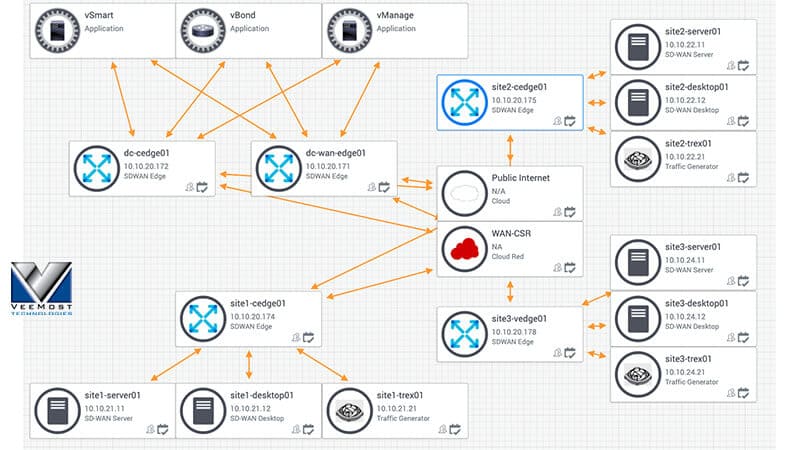AI is shaping the future of customer experiences and the contact center
Artificial Intelligence (AI) is creating a lot of excitement and there are good reasons for this. According to Forbes, 50% of IT professionals believe artificial intelligence and machine learning are playing a role in cloud computing adoption, growing to 67% by 2020. This week I will be speaking at UC Expo about the role that artificial intelligence is playing in advancing contact center productivity and efficiency, and in particular how this is benefiting the agent and customer experience.
With all the news around AI, it’s easy to get lost in the hype versus reality. I’d like to demystify some of this and share my view of the five most common myths I’m hearing about as I travel the world talking to colleagues, partners, and customers.
Five myths:
- AI is new
- AI = chatbots
- AI can replace all your people
- AI is all about automation
- AI will reduce call volume
1. AI is new
The concept of Artificial Intelligence (AI) has actually been around for a long time. In 1950, the English mathematician and computer scientist, Alan Turing documented his ideas for testing a thinking machine. Turing’s test theory suggested that if a machine was able to communicate in full conversation via a teleprinter without any detectable differences from a human, the machine could be deemed “thinking.”
Contact centers have been using AI in some form or another for decades. We just didn’t call it AI. Even with basic automatic call distribution (ACD) technology it was possible to filter and route calls to the right agent at the right time using an algorithm to determine the best agent. AI at its core is a series of fast predictions, and contact centers have been using predictive algorithms since the early 1990s. AI continues to show up in new places and make a major impact in revolutionizing contact centers and customer service.
2. AI = chat bots
Chat bots have become mainstream in contact centers and are just one of the ways in which AI is used to optimize agent workload and enhance customer self-service. Bots are being used for everything from qualifying customer requests, to booking hotels, and providing shopping assistance. Bots help answer questions and direct your customers to the appropriate person with the best skills and experience. Our Customer Virtual Assistant provides a highly effective way of offloading simple, mundane, and repetitive requests from your agents, allowing them to spend higher quality time helping customers on more complex requests. This results in providing faster self-service to customers, while improving agent optimization, productivity and costs. While chat bots utilize AI, there are many other forms that AI takes in contact center operations beyond chat bots – including routing schemes, forecasting, deeply inspecting customer interactions – and more. Cisco’s Customer Journey Analyzer, for example is a cloud based solution that allows companies to gather data from multiple sources to draw correlations between operational and business data to improve customer experience.
3. AI can replace all your people
This is probably the most misunderstood belief about AI and one that grabs the attention of senior executives when they’re looking for ways to cut costs. AI promises benefits far beyond just cost savings, and has the potential to help and improve how your employees work, rather than replace them. AI will certainly change workloads, staffing and processes that may lead to reduced staffing, but a primary advantage is that it augments agents to make them more scalable and efficient. Take the example of a chat bot. When the bot detects that the interaction needs to be escalated to a human agent, it brings along with it the history of the conversation to enable a seamless transition from self-service chat to assisted chat. The agent can then very quickly and effortlessly take over the interaction with everything they need displayed right in front of them. In this regards, AI is an enabler for better live agent assistance, not a replacement of it.
4. AI is all about automation
Business process automation is a key benefit of AI in the contact center because it increases agent efficiencies and workflows, however it is better to think of it in terms of agent augmentation as much as automation. Many people still want to engage with a human, so as you take advantage of automation in your contact center, make sure your customers can still reach a person when one is needed. According to a study by PwC, only 3% of U.S. consumers want their experiences to be completely automated. In addition, automation of customer processes inevitably leads to exceptions that cannot be addressed by AI, and need human assistance. These exceptions are often make-or-break moments in a customer relationship.
The automated process should learn from the data that you have spread across a multitude of systems, and from human interactions so that those experiences are improved resulting in better service to your customers. Understanding and analyzing that data can tell you so much about how your customers are experiencing your brand, so that actions can be taken to make their journey better. A great example of this is our new Cisco Answers intelligent agent which is powered by Google Contact Center AI. Cisco Answers listens to customers conversations in real-time, and proactively presents intelligent suggestions, documents, and other key forms of enterprise knowledge to the agent desktop, while the agent is interacting with a customer. This empowers agents with the needed context and information they need to deliver faster, more personalized and proactive care.
5. AI will reduce call volume
This is another misconception – AI may reduce call volumes via automation – but it’s likely that the calls that do make it to live agent assistance (the exceptions) will be longer and more complex in nature. This could mean that the same amount of staff are handling less, but longer calls. AI enables more accurate decisions and routing so that many customer interactions can be handled without a human agent. It has the ability to classify information and make predictions faster and at higher volumes than humans can accomplish on their own. As an example, in an omni-channel contact center, customers can be routed much more quickly and efficiently to the right resource that can add the most value to the experience based on the channel (e.g. email, phone, chat) the customer is using. According to PwC, 46% of all consumers will abandon a brand if the employees are not knowledgeable. This will require contact centers to redefine how they do agent staffing and how they measure call volume and call success.
So where do we go from here?
While AI for contact centers isn’t necessarily “new”, advancements in algorithms and the ability to apply them in real-time to massive amounts of data being created from contact center operations is. This combination opens up exciting new possibilities for companies to break free of constraints to address issues that have been challenging contact centers for decades. These include contextual routing real-time work to agent attributes, more precisely forecasting agent schedules, and higher degrees of customer personalization. As more and more data accumulates, processor speeds increase unabated, and algorithms march forward, AI will have a larger and larger role in making contact centers more efficient and effective.
Source: blogs.cisco.com Credit@ Vasili Triant











